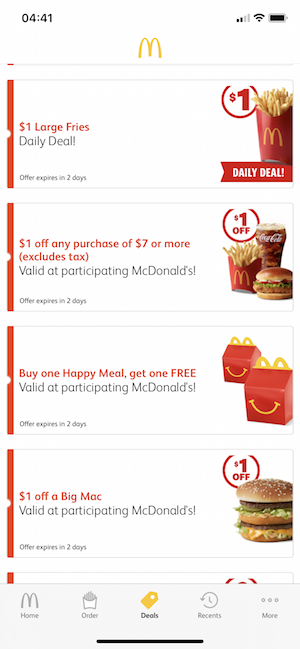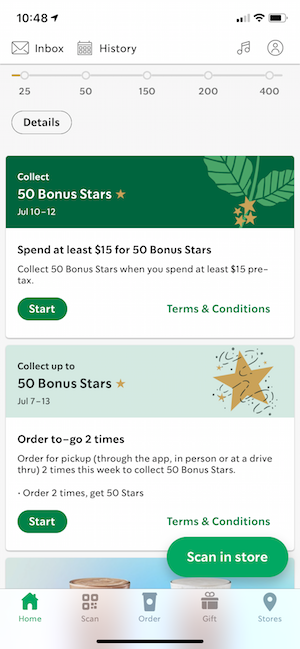posted: July 11, 2020
tl;dr: A case study of how software automates aspects of restaurant industry jobs...
The COVID-19 pandemic is accelerating changes that were already underway in the restaurant sector towards greater automation. In general those restaurants with more advanced IT strategies are weathering the storm better than the technology laggards. As someone who works in IT and who also used to go out to quick-serve restaurants for lunch back when I worked in an office (and may do so again, someday), it’s been fascinating to watch this process.
The first step in automating the ordering process was to replace manually configured menu boards with flat panel displays. The primary applications for flat panel displays are televisions and computer displays: the volume in those markets drove down the price enough to make them attractive as mostly-static menu boards. Once the IT infrastructure is in place, a flat panel display menu board saves a little bit of labor in reconfiguring the menu items and prices, and allows the restaurant to emphasize different items at different times of the day. It makes price changes easier. The displays can also show in-store ads, to drive additional sales.
The bigger win comes from automating the order entry process. Panera Bread was one of the first restaurant chains that I saw doing this, back in the 2014 timeframe. They were the nearest sandwich shop to the office where I worked at the time. They launched a smartphone app and web ordering, with a dedicated order pickup area in the store and parking spaces by the front door. My travel time to the store was slightly longer than the order preparation time, meaning I could order before I left and my food would be waiting for me when I arrived. I felt so much smarter than the folks waiting in the long noon-hour line at the store.

The McDonald's app offers lower prices and specials deals, to encourage use
I first encountered a McDonald’s in-store ordering kiosk on a sightseeing trip to Paris with one of my kids in the summer of 2014. We ducked into a McDonald’s near the Louvre to escape a rainstorm. I had heard rumors of the kiosks but had never seen one in the United States. It made complete sense that McDonald’s first rolled out this technology in Paris, where the cost of labor was high. On the kiosk’s home screen was a button that allowed the user to select the language to be used for the session. Paris, of course, gets a lot of tourists speaking languages other than French. Once the initial kiosk development and capital costs were paid, the kiosks were much cheaper than hiring multilingual clerks to take customers’ orders. They were probably more accurate, too.
In the years after that trip McDonald’s and other large employers of minimum wage workers came under political pressure to pay higher wages. I’m not going to debate the merits and demerits of the minimum wage law. All I knew for sure back in 2014 was that, as McDonald’s wages rose, the ordering kiosks would appear in their United States stores. The technology already existed. Today they are ubiquitous in McDonald’s in the U.S., and the typical McDonald’s store has a lower staffing level as a result because the order-taking process is mostly self-serve. Now that the Covid-19 pandemic has reduced in-store visits and made shared kiosks a potential source of virus transmission, McDonald’s preferred ordering method has become their mobile phone app.
An ordering app delivers more benefits to the restaurant than just eliminating the labor of having clerks take orders. It allows the restaurant to track personalized buying behavior, which provides data for determining more ways to sell items to individual consumers. The restaurant can easily test different pricing and promotion strategies. It provides operational efficiencies, by getting the consumer to order ahead of time. And by linking the app to a payment service on the smartphone such as Apple Card and Apple Pay, the payment process becomes convenient and fully automated. I’m sure the restaurant ends up with a few paid orders every day that aren’t ever picked up, which is some additional revenue.

The Starbucks app offers rewards points leading to free items, to encourage use
All these financial benefits accrue to the restaurant only when their customers use the app. To encourage customers to use the app instead of ordering and paying via restaurant personnel, the restaurants are effectively charging lower prices when customers use the app (viewed another way, they charge higher prices when customers don’t). Many restaurant apps have a “deals” or “offers” section with lower priced items (or bundles of items) than the standard menu prices. Starbucks charges the same prices for drinks on their app, but by using the app you can quickly accrue points which are redeemable for free food and drink. The Jimmy John's app also rapidly accumulates rewards to be used for free sandwiches. These days I first try to see if I can order via an app, rather than paying full price by ordering in person. In the midst of a pandemic, it’s safer, too.
All this automation has taken place without a single humanoid robot being involved. This is the more typical way that jobs get automated by software. Software gets written which requires less worker time and effort for certain repetitive processes, in this case order entry and payment. Worker productivity across the business and the economy rises, although the number of workers employed by a given business may fall. The alternative to automation is stagnation: keeping everything exactly as it is right now, with the same amount of human labor needed to produce the same amount of goods. If we had decided to eschew automation 150 years ago, we’d all be living lifestyles very much like the Amish do today.
Related post: The algorithms will appraise your car now
Related post: The algorithms will determine your price now
Related post: The self-driving car will take you to your destination now
Related post: The smartphone will help you rent your home now